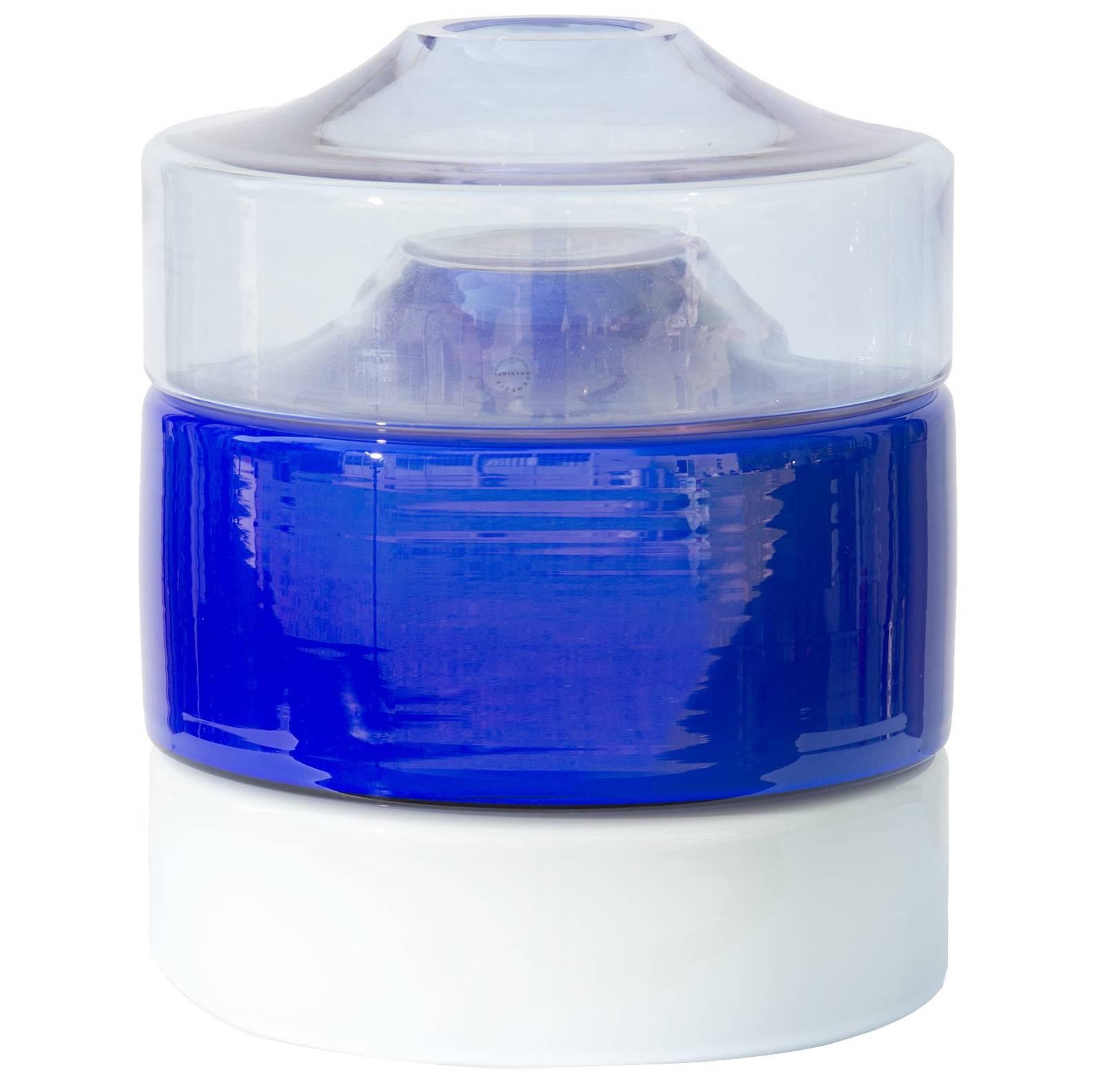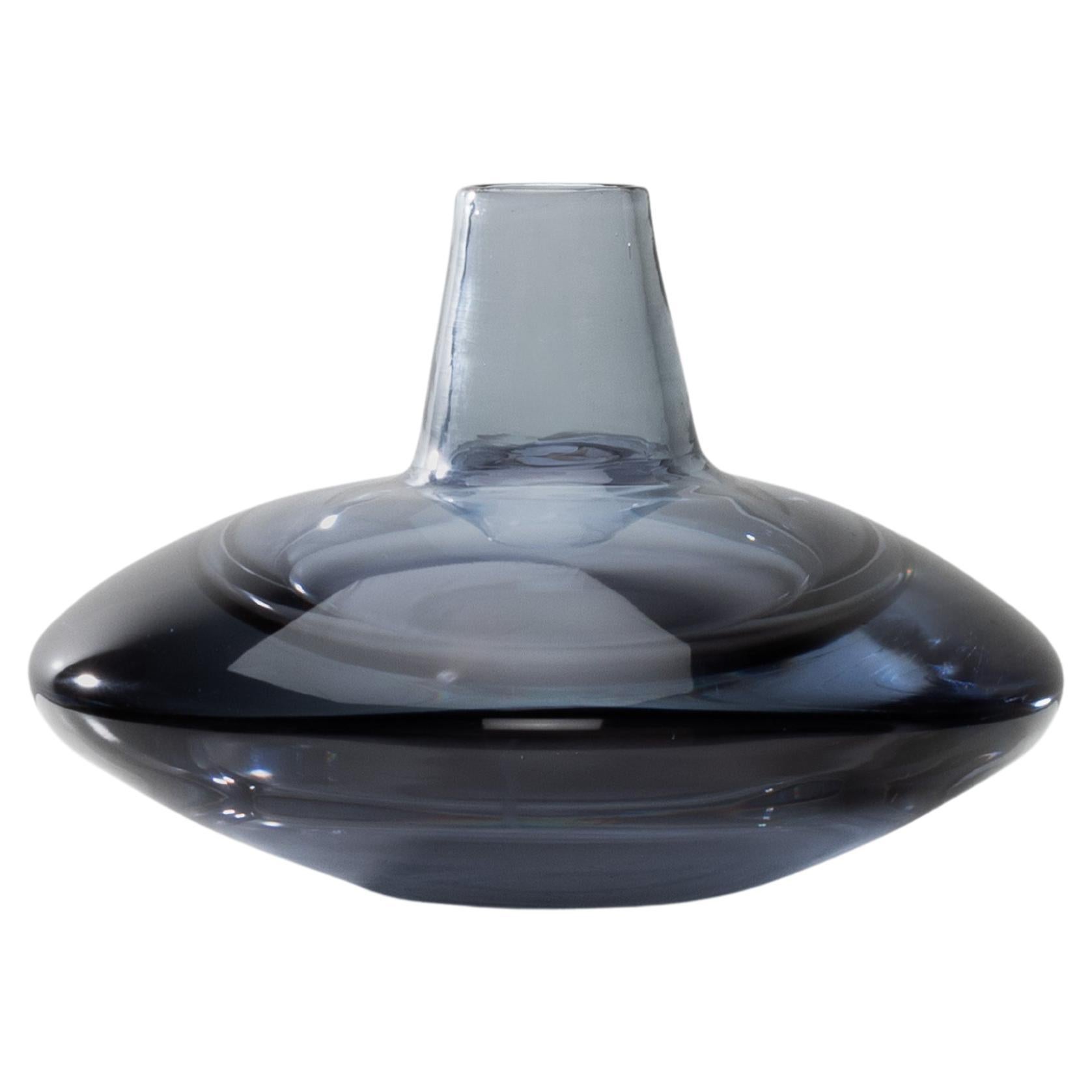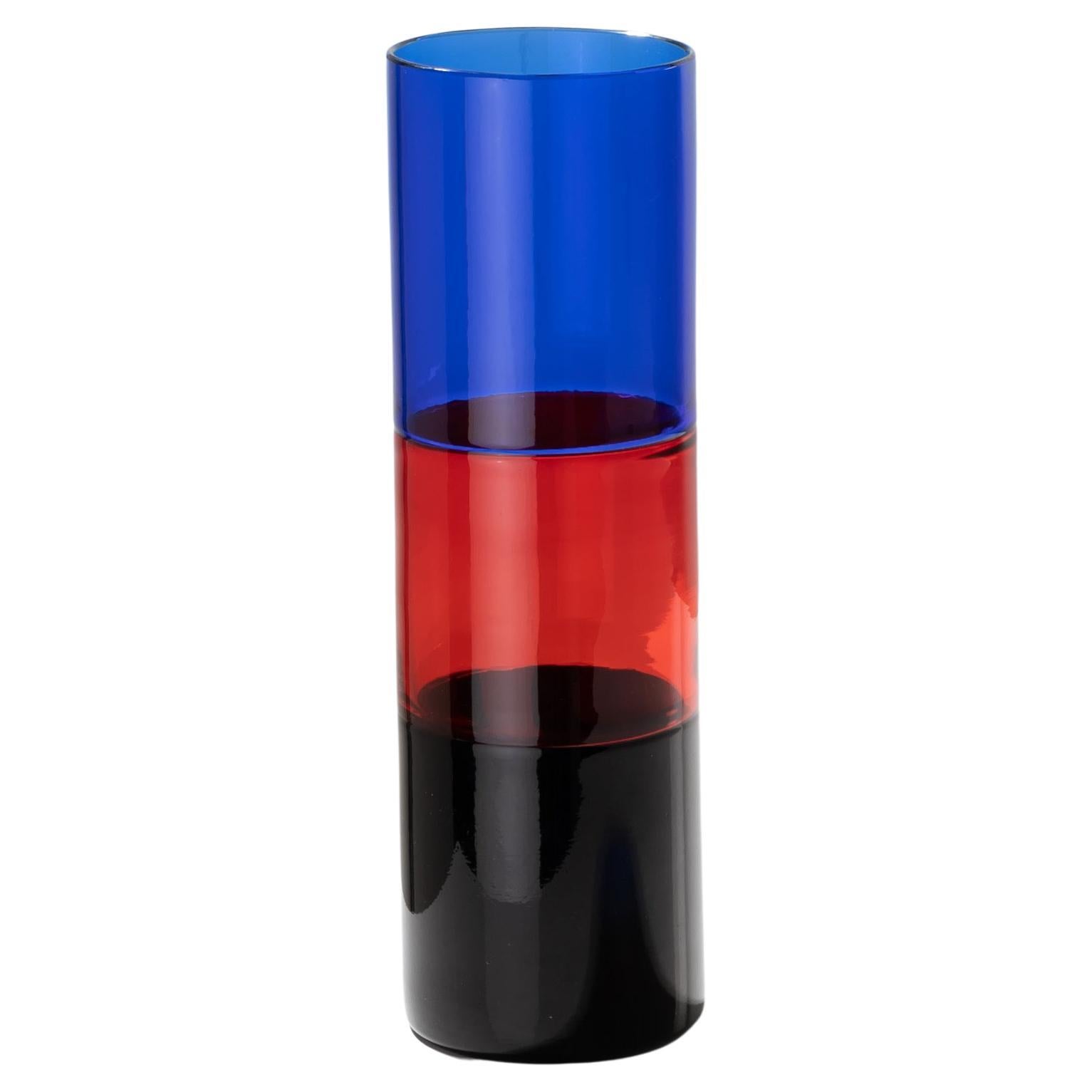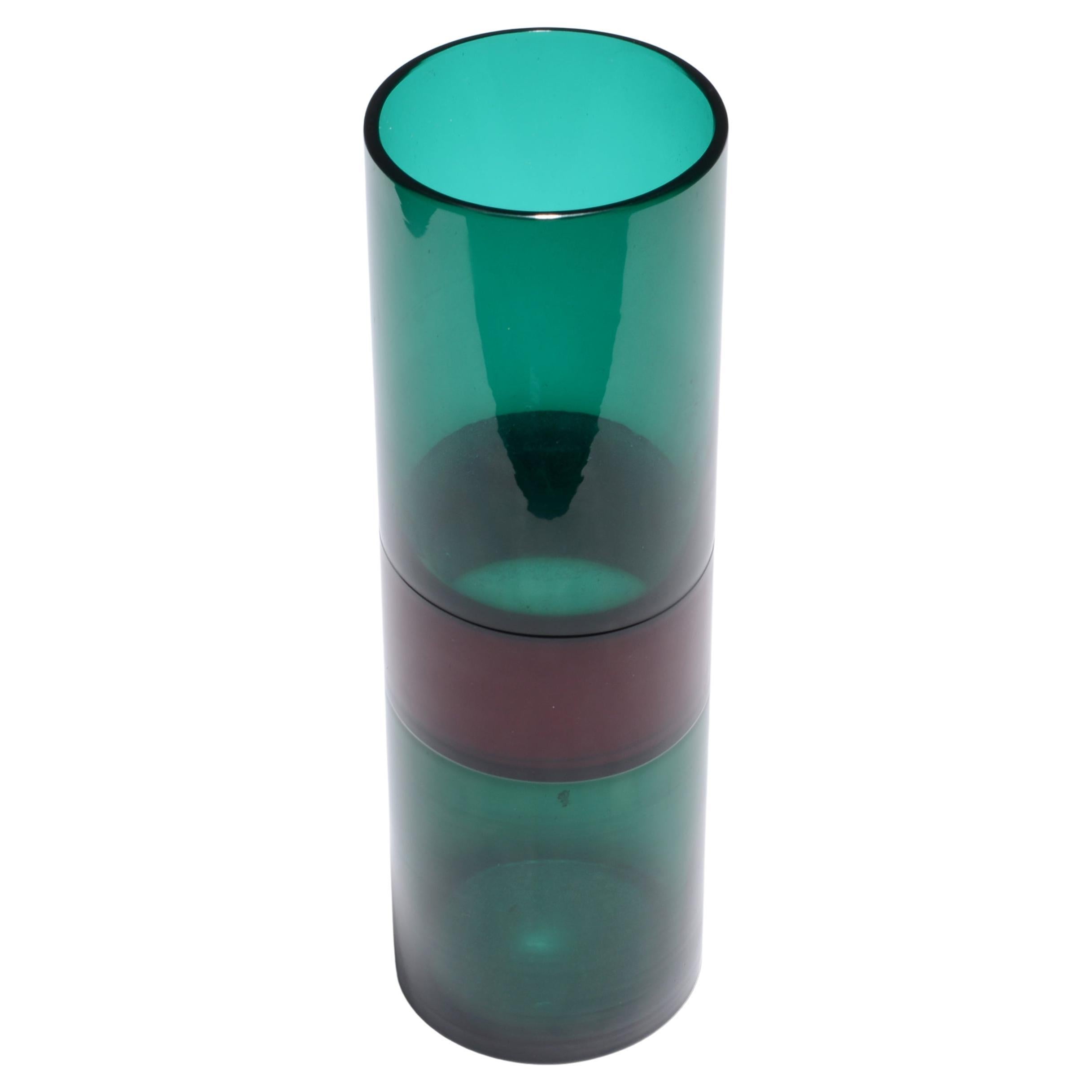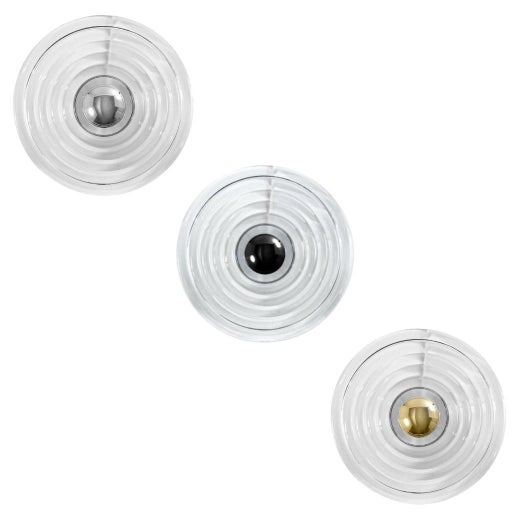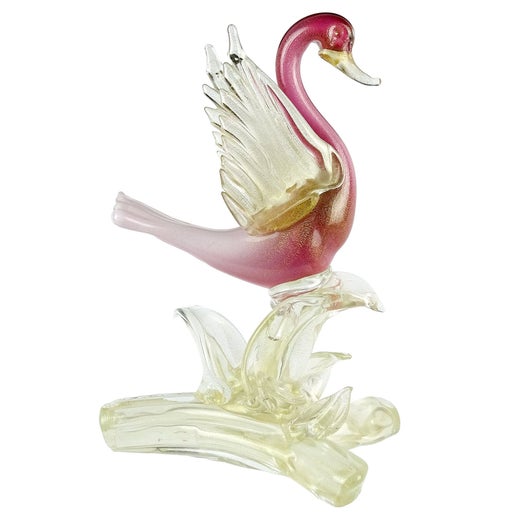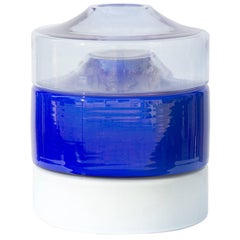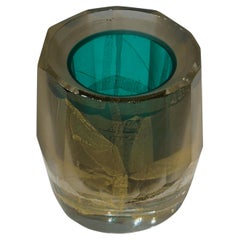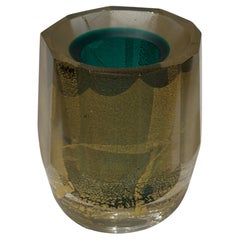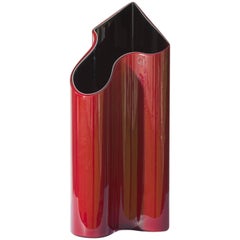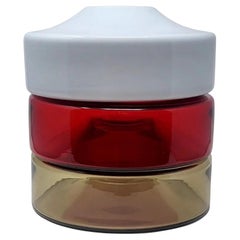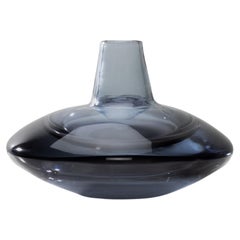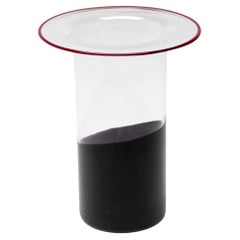Italian Murano Glass Vase Colonna Model by Tom Dixon for Salviati
About the Item
- Creator:
- Dimensions:Height: 13.39 in (34 cm)Width: 9.45 in (24 cm)Depth: 9.45 in (24 cm)
- Style:Modern (Of the Period)
- Materials and Techniques:
- Place of Origin:
- Period:
- Date of Manufacture:2003
- Condition:
- Seller Location:Milan, IT
- Reference Number:1stDibs: LU2140340921092
Tom Dixon
Artistic, innovative and entrepreneurial, the self-taught creator Tom Dixon has been a contemporary design-world maverick for more than three decades. From his revolutionary art-meets-design projects of the 1980s and throughout his dynamic and influential career as a designer of furniture, housewares and interiors, the only consistent note has been change. Dixon’s chief fascination is exploring new materials and new ways of constructing things.
Dixon was restless even as a young man. He enjoyed ceramics and drawing in high school but later dropped out of the Chelsea School of Art in London. While repairing his motorcycle in 1983, Dixon learned how to weld and took to the craft. He began making what he has called semi-functional objects from scrap metal (sometime as performance art in a nightclub), then formed a furniture studio–cum–think tank called Creative Salvage. Amid the ritzy excess of the ’80s, Dixon — along with designers such as Tejo Remy and Ron Arad — forged a new, attention-getting aesthetic with furniture made from found materials.
In 1987, Dixon began working for the Italian furniture manufacturer Cappellini, which put his best-known design, the slender, sinuous S chair, into production, followed by such pieces as the Pylon chair (1992), a wire lattice that resembles electrical transmission towers. Starting in the 1990s, Dixon expanded his interests rapidly. He started a company to manufacture the stackable plastic Jack light; joined the housewares retailer Habitat as creative director; and breathed new life into Artek, the venerable Finnish maker that Alvar Aalto and his wife Aino helped cofound. Since 2002, Dixon has run his namesake company fabricating furnishings from novel materials like brass foil-clad wood and “vacuum-metalized” glass.
The hallmark of Dixon’s design is his captivation with the process of creating pieces such as chairs, tables and lighting fixtures. “A kind friend once described me as a ‘vertebrate designer,’” Dixon has said. “That means that I design from the bones outwards and am not really interested in surface.”
Classic Dixon pieces are those that exhibit the manner of their making — from his early work in welded scrap metal to the woven rattan seats and backs of his Fat chair for Cappellini. There are two ways to approach Dixon designs: as a collector, or as a decorator. The former will seek Dixon’s one-off and limited edition works and prototypes. These historical artifacts carry high prices that range from around $8,000 to $50,000 and above. Those more interested in a dynamic look will find that manufactured Dixon designs — such as his Jack lights or his Melt pendant — can be found for prices that range from about $300 to $1,000. Either way, as you will see on 1stDibs, the designs of Tom Dixon have a singular allure that makes them a noteworthy element in any room.
Salviati
Not only did Salviati support the revival of Venice’s flagging Murano glass industry in the 19th century, but the company also became world-renowned for its innovative glassmaking techniques, revolutionizing the art of mosaics and glassware design.
The story of Salviati glass begins with Vicenza-born lawyer and entrepreneur Antonio Salviati. His love of Murano glass art and mosaics inspired him to establish his own mosaic and glass manufacturing firm, the Salviati Dott. Antonio fu Bartolomeo company, in Venice in 1859. Glassmakers in the region had been weathering a dismal political climate and growing competition in neighboring countries, and Salviati had initially hoped to revive Murano glassmaking in order to restore deteriorating mosaics in local cathedrals.
In 1864, Salviati exhibited a monumental glass mosaic at the “First Glassmakers’ Exhibition,” which won the gold medal. His award-winning mosaic solidified his company’s reputation as a first-rate glassmaker, which soon drew the attention of international investors, particularly investors from Great Britain.
In 1866, Salviati and C. opened in London with the support of historian William Drake and diplomat Sir Austen Henry Layard. Meanwhile, the Salviati company established its headquarters on the Rio dei Vetrai in Murano.
Throughout the late 1800s, Salviati and C. expanded its production to include household glassware and serveware and decorative objects such as cups, glasses, amphoras and vials. Salviati also received commissions to produce mosaics for St Paul’s Cathedral and the Houses of Parliament in London, the Paris Opera House and the Viceroy of Egypt’s Palace in Alexandria.
After Antonio Salviati died in 1890, his sons Giulio and Silvio took over the company. The Barovier family — a dynasty that stretches as far back as 1295 — bought the manufacturer in 1883, and a glass master named Maurizio Camerino, who had honed his skills at Salviati, was appointed to lead the company. Camerino’s children took the reins following the glass master’s death in 1931 and launched a successful lighting line of table lamps and chandeliers after World War II.
Throughout the 20th century, Salviati participated in several Venice Biennale exhibitions from 1958 to 1972. In 1962, the company was awarded the Compasso d’Oro prize for the Marco vase, designed by architect Sergio Asti.
Since its acquisition by the Umana group in 2015, Salviati has collaborated with numerous renowned designers such as Federico Peri, Davide Bruno, Renzo Stellon, Alberto Lago and Anna Gili. Salviati's pieces can be found in the collections of the Museum August Kestner in Hanover, Germany, the Museum of Modern Art and Corning Museum of Glass in New York, the Eretz Museum in Tel Aviv, Israel, and the Murano Glass Museum in Venice.
Find antique Salviati glass that includes bowls, vases, lighting and more.
- ShippingRetrieving quote...Shipping from: Asti, Italy
- Return Policy
More From This Seller
View AllEarly 2000s Italian Modern Vases
Glass
Vintage 1980s Italian Modern Vases
Murano Glass
Vintage 1980s Italian Modern Vases
Murano Glass
Vintage 1980s Italian Modern Vases
Murano Glass
Vintage 1980s Italian Modern Vases
Murano Glass
Vintage 1970s Italian Modern Vases
Murano Glass
You May Also Like
Early 2000s Italian Modern Vases
Glass, Murano Glass
Mid-20th Century Italian Mid-Century Modern Vases
Blown Glass
Vintage 1960s Italian Mid-Century Modern Vases
Murano Glass
Vintage 1950s Italian Mid-Century Modern Vases
Art Glass, Murano Glass
Mid-20th Century Italian Mid-Century Modern Vases
Blown Glass
Vintage 1970s Italian Vases
Murano Glass
Read More
How Tom Dixon Became a Design Powerhouse without Formal Training
Dixon's eponymous London-based brand is known for its distinctive furniture and lighting, but his creativity is boundless.
The Married Collectors behind Stockholm’s Newest Design Museum
Kersti Sandin and Lars Bülow want their new endeavor to educate both students and professionals about furniture design.
